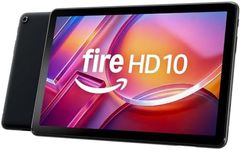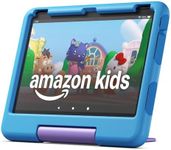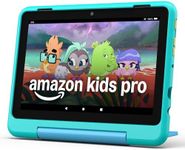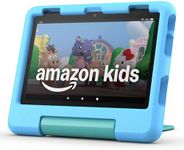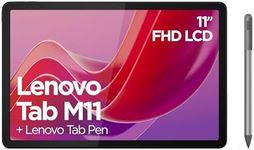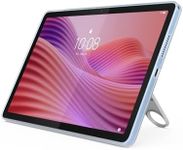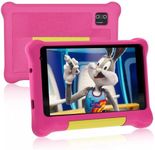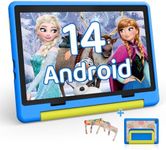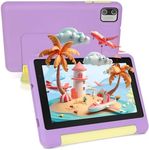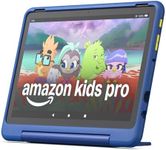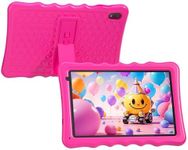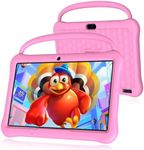Buying Guide for the Best Kids Tablets
When choosing a tablet for kids, it's important to consider factors that ensure the device is both educational and entertaining, while also being safe and durable. Kids' tablets are designed to cater to the needs of children, offering a balance between fun and learning. They often come with parental controls and kid-friendly content. The right tablet should be easy for a child to use, have a robust build to withstand drops, and offer a good selection of apps and games that are age-appropriate. Consider the child's age, interests, and the primary purpose of the tablet, whether it's for learning, entertainment, or a mix of both.Screen SizeScreen size refers to the diagonal measurement of the tablet's display. It's important because it affects how comfortable the tablet is to hold and how easy it is for kids to interact with the content. Smaller screens, around 7 inches, are more portable and easier for younger children to handle. Larger screens, like 10 inches, provide a better viewing experience for videos and games but can be heavier and harder for small hands to manage. Choose a screen size that matches your child's age and how they will use the tablet. For younger kids, a smaller, more manageable size is often better, while older kids might appreciate a larger screen for more immersive experiences.
DurabilityDurability is about how well the tablet can withstand drops, bumps, and spills, which are common with kids. This is important because it ensures the tablet lasts longer and reduces the need for repairs or replacements. Tablets designed for kids often come with rugged cases or are made from materials that can absorb shocks. When choosing a tablet, look for features like reinforced corners, shatterproof screens, and water-resistant designs. If your child is particularly active or clumsy, prioritize a tablet with high durability to ensure it can handle rough use.
Parental ControlsParental controls are features that allow parents to manage what their children can access on the tablet. This is crucial for ensuring a safe and age-appropriate experience. Parental controls can include setting time limits, blocking certain apps or websites, and monitoring usage. When evaluating tablets, consider how easy it is to set up and adjust these controls. If you want to ensure your child is using the tablet safely and responsibly, choose a model with comprehensive and user-friendly parental controls.
Content and AppsContent and apps refer to the educational and entertainment options available on the tablet. This is important because it determines what your child can learn and enjoy. Some tablets come pre-loaded with kid-friendly apps and games, while others offer access to app stores with a wide range of options. Consider the age and interests of your child when selecting a tablet. Younger children might benefit from educational games and interactive storybooks, while older kids might enjoy more complex games and creative apps. Ensure the tablet supports a variety of content that aligns with your child's needs and interests.
Battery LifeBattery life indicates how long the tablet can be used before needing a recharge. This is important for ensuring uninterrupted use, especially during travel or long periods away from a power source. Tablets with longer battery life are more convenient and reduce the frequency of charging. When choosing a tablet, consider how your child will use it. If they tend to use the tablet for extended periods, such as during car rides or flights, opt for a model with a longer battery life. For occasional use, a shorter battery life might be sufficient.
Storage CapacityStorage capacity refers to the amount of space available on the tablet for apps, games, videos, and other content. This is important because it affects how much content can be stored and accessed offline. Tablets with more storage can hold more apps and media, which is useful if your child likes to download a lot of content. Storage is typically measured in gigabytes (GB), with common sizes ranging from 16GB to 128GB or more. Consider your child's usage habits; if they enjoy downloading many apps or storing videos for offline viewing, opt for a tablet with higher storage capacity. Some tablets also offer expandable storage options, which can be a flexible choice.
